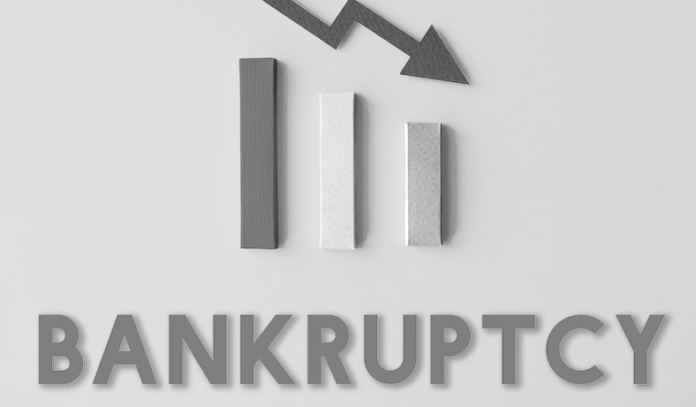According to Statista, in 2020, 21655 businesses filed for bankruptcy protection In the United States. Although some of these unfortunate companies will restructure or find a way to come back from the brink, others get forced to close their doors forever. Bankruptcies are a negative impact on the credit score of a debtor. If you have problems paying back your debt to creditors, it could be an excellent option to use a Bankruptcy service. Bankruptcy is a legal process that allows a company or individual to relieve their debts; that would help you get away from your financial obligations. Bankruptcies can cost several thousand dollars, which may cause some business owners to worry about how they will pay for it.
Who Pays For Those Debts When People Can’t Pay Them Back?
The bankruptcy process lets debtors walk away from debts that cannot be paid and require creditors to write off such debts. Legal ways may pay off bankruptcies through agencies specific as trustees and receivers. A default is a transfer of wealth from creditors to debtors. How much wealth gets transferred? The answer depends on the kind of bankruptcy, whether the debtor is an individual, a municipality, or a business. The transfers in the case of individual defaults are small. That’s because no one but you cares if you go broke. You declare bankruptcy, your debts get wiped out, and that’s that. If you have any assets left, your creditors take them. If you don’t have any purchases, your creditors get nothing. You might think that only irresponsible people go bankrupt. But that’s not true either. Many bankruptcy lawyers will tell you stories about clients who went bankrupt after losing their jobs or suffering some other financial setback through no fault of their own. Some even lost their homes through foreclosure while trying to renegotiate their mortgages with their bank. Others lost their insurance in floods or other natural disasters because they couldn’t pay their premiums.
Business bankruptcies are more complicated because other people care if a business goes bankrupt. It’s not just the owners who lose – it’s also the workers who lose their jobs and all the other companies who fail their customers or suppliers. So, in theory, there should be more at stake and larger transfers of wealth between debtors and creditors in business bankruptcies than in personal ones. However, business bankruptcies get used to transfer wealth from labor to capital – from workers to shareholders – rather than from creditors (who tend to be banks)
Bankruptcy is a fact of life for many people, and for some, it is a sad event that occurs more than once. The United States Bankruptcy Code provides for six types of bankruptcy: Chapters 7, 9, 11, 12, 13, and 15. Most individuals file either as a Chapter 7 or Chapter 13 debtor. A Chapter 7 debtor wishes to discharge all debts and start from scratch. A chapter 13 debtor is an individual with regular income who wishes to repay all or part of his debts in installments over time. In either type of bankruptcy, the debtor may protect so-called exemptions from the claims of creditors by using state law or the federal Bankruptcy Code. But no matter which type of bankruptcy an individual files under, the cost is always borne by someone else.
- Creditors and shareholders fund chapter 7 bankruptcies through interest rates charged on consumer loans, business loans, and credit cards. Shareholders also bear the brunt of lost value in a company that has provided goods or services to a bankrupt customer.
- Chapter 13 bankruptcies debtors make installment payments to a trustee who then disburses those payments to creditors according to priorities set out in the Bankruptcy Code (usually paying secured creditors first).
Who Pays for Unpaid Debts
That’s where insurance comes in. Insurance is one of those industries that has always been dominated by regulation, making it resistant to startup competition. But as we’ll see, it could become a playground for startups because the regulatory structure is not as strong as it looks. One main reason it’s regulated is that insurance involves a lot of information asymmetry: the company knows much more about its risks than the customer does. As with banks, this makes customers dependent on the company and less able to shop around for alternatives. And like banks, insurance companies have economies of scale. Because costs per customer decrease dramatically with size, only a few big companies can succeed in each market. In addition to these market forces, there are regulatory ones: governments tend to impose price controls on insurance companies (for example by setting maximum prices) or impose other regulations they would never dream of imposing on car manufacturers or supermarkets.
Bankruptcy is a serious thing to go through, but its protection provides individuals in need of debt relief. It’s ultimately a complex practice with implications for family, friends, creditors, and beyond. If you’re considering bankruptcy as an option to help shed debt, be aware of what the future may hold. In most cases, people who file for bankruptcy get freed from most of their obligations. If a bankruptcy judge ruled in favor of one’s bankruptcy petition, the court would enter a ” discharge ” order, ending the case and invalidating most debt. A debtor’s property is no longer at risk to pay off those debts, but creditors can still try to collect on that debt after the individual declares bankruptcy.










